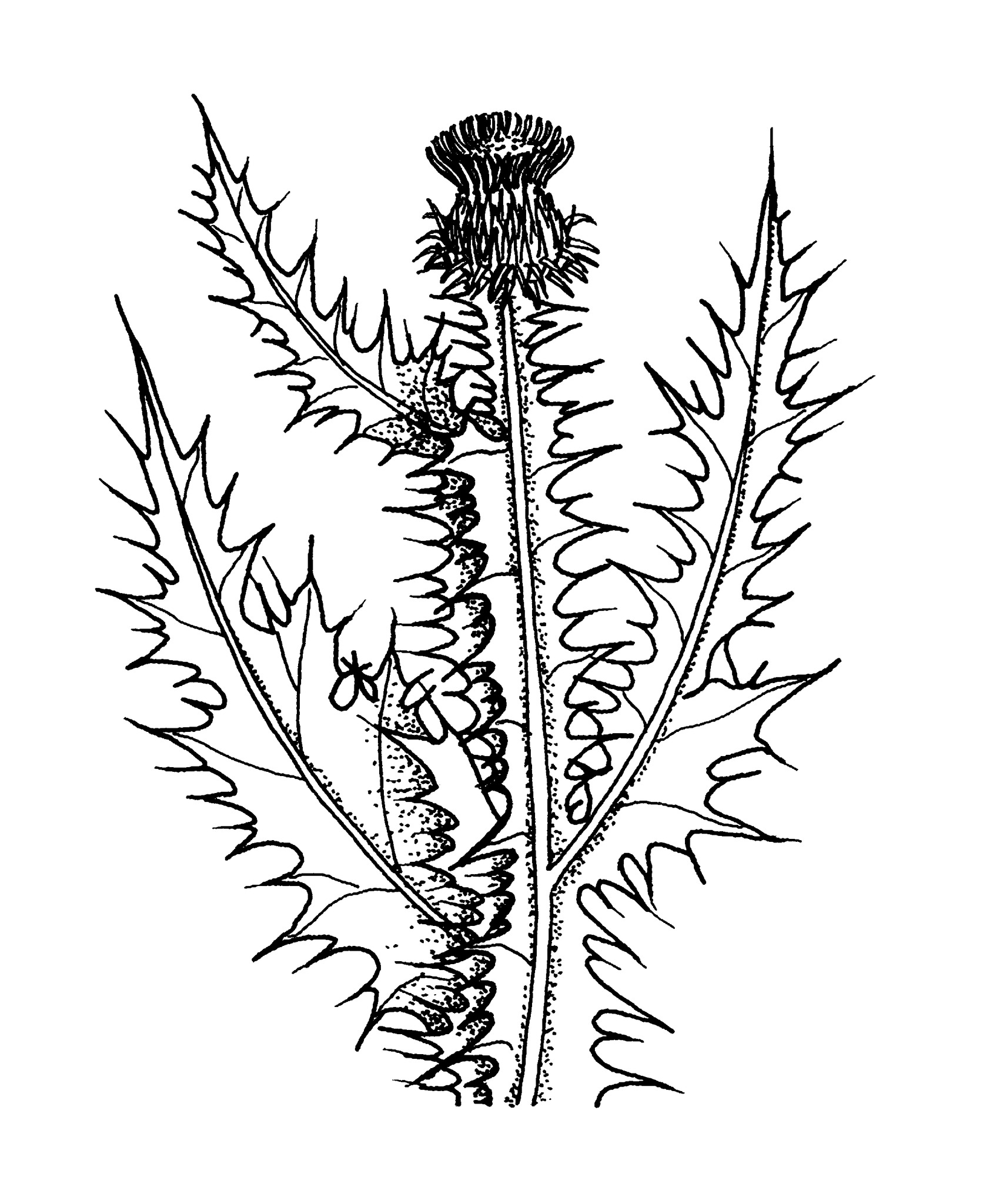
Greek onos - an ass, pordé - fart, as the plants were thought to cause flatulence in donkeys.
Annual or biennial herbs, spiny, glabrous to hairy. Stems erect, rarely absent, winged. Leaves basal and/or along stems, alternate,margins toothed to divided, base stem-clasping, sessile. Capitula diskoid, terminal, solitary or in clusters, usually with stalks. Involucral bracts in several rows, overlapping, unequal, spiny. Receptacle pitted, flat. Florets bisexual, tubular, purple, pink or white. Achenes obovoid, 4- or 5-angled, glabrous. Pappus of feathery or barbed bristles, joined at base and shed as a unit.
Four species have become naturalised in Australia, 3 are declared noxious weeds. Although several species make attractive garden plants, they should be avoided as they have the potential to become troublesome weeds. Always remove and destroy capitula before mature achenes are shed.
Spiny plant with winged stems; receptacle naked and pitted.
About 60 species from Europe, Asia and North Africa.
Dress (1966).
Source: (2002). Dahlia. In: . Horticultural Flora of South-eastern Australia. Volume 4. Flowering plants. Dicotyledons. Part 3. The identification of garden and cultivated plants. University of New South Wales Press.
